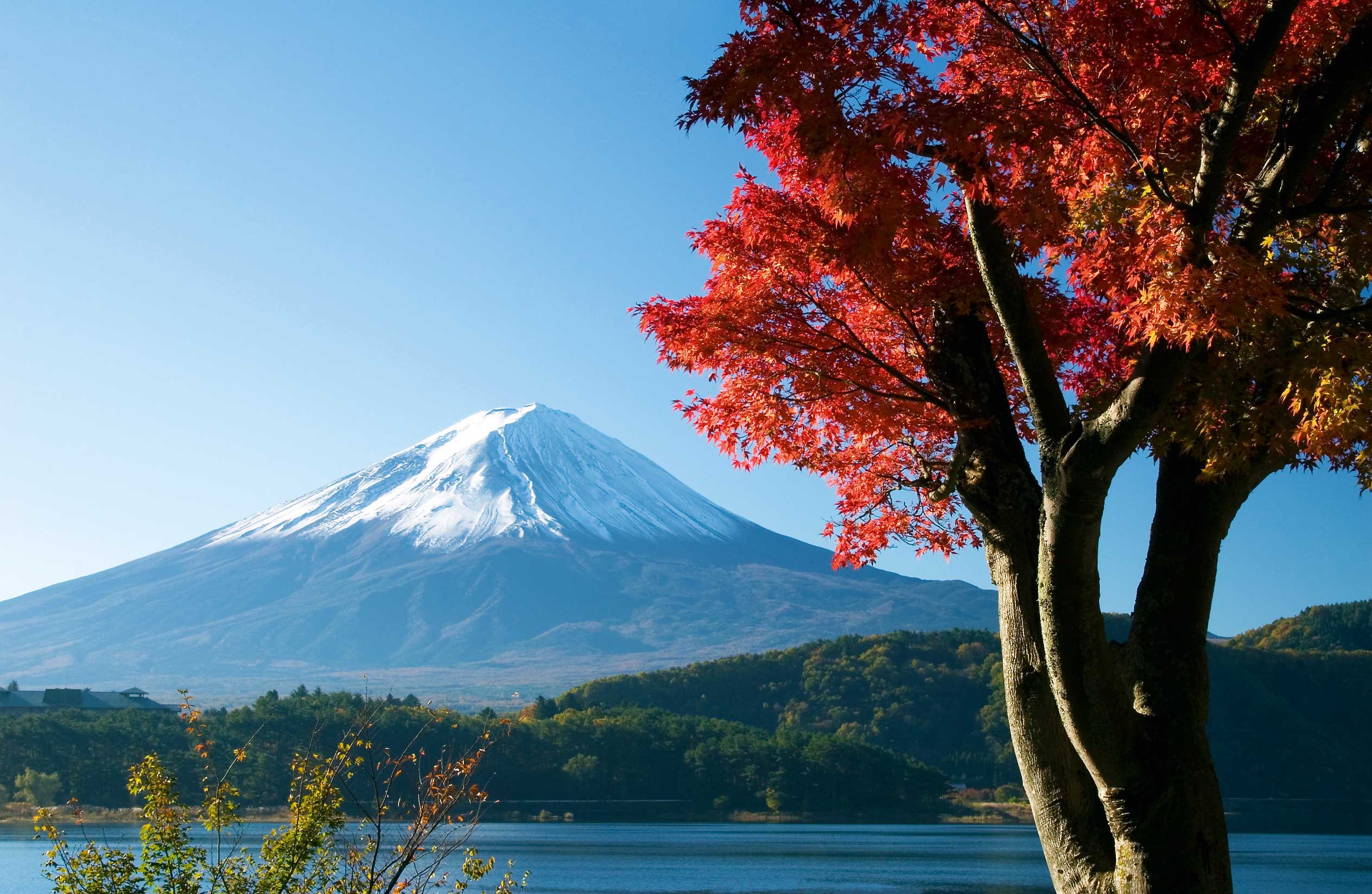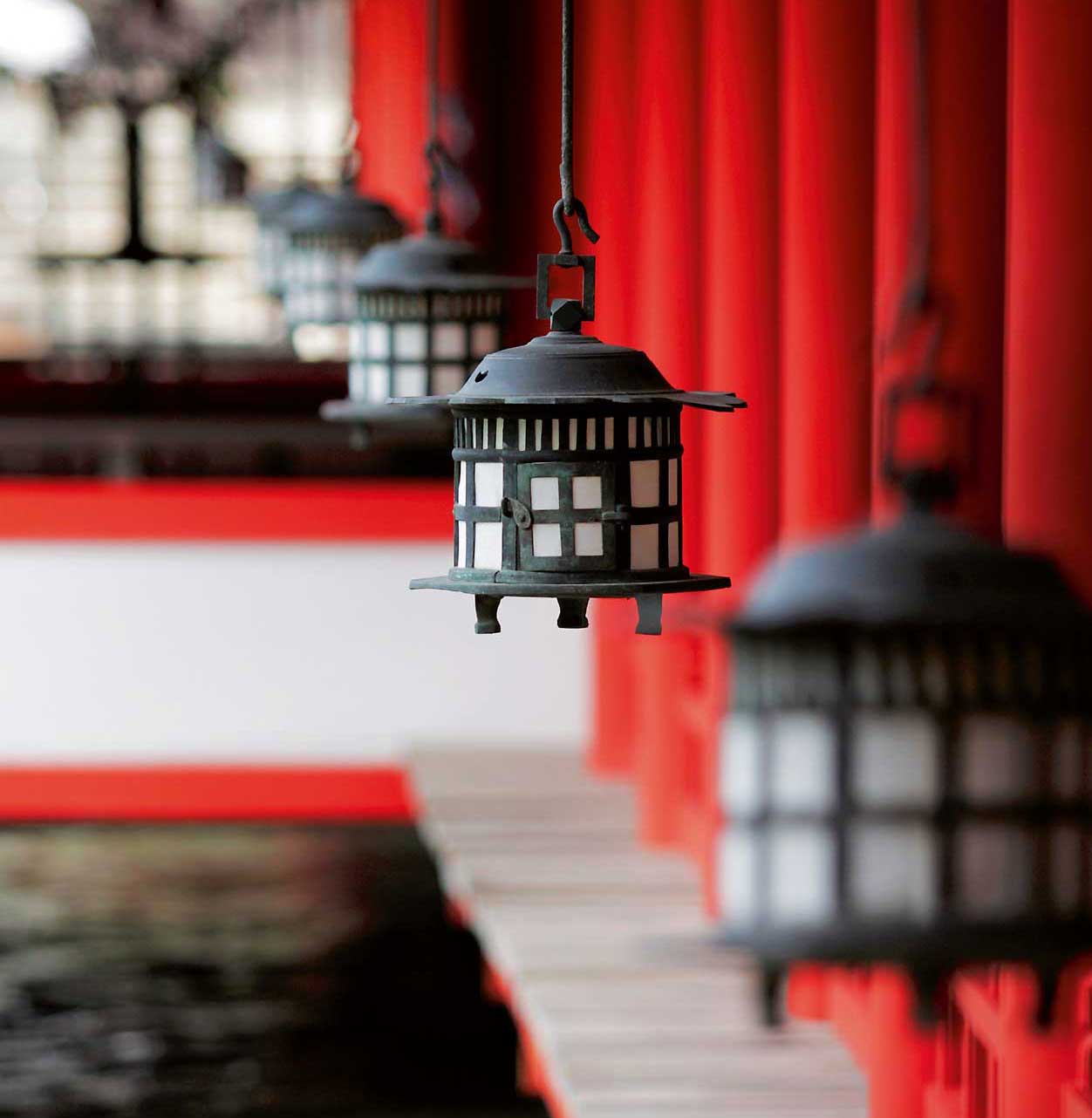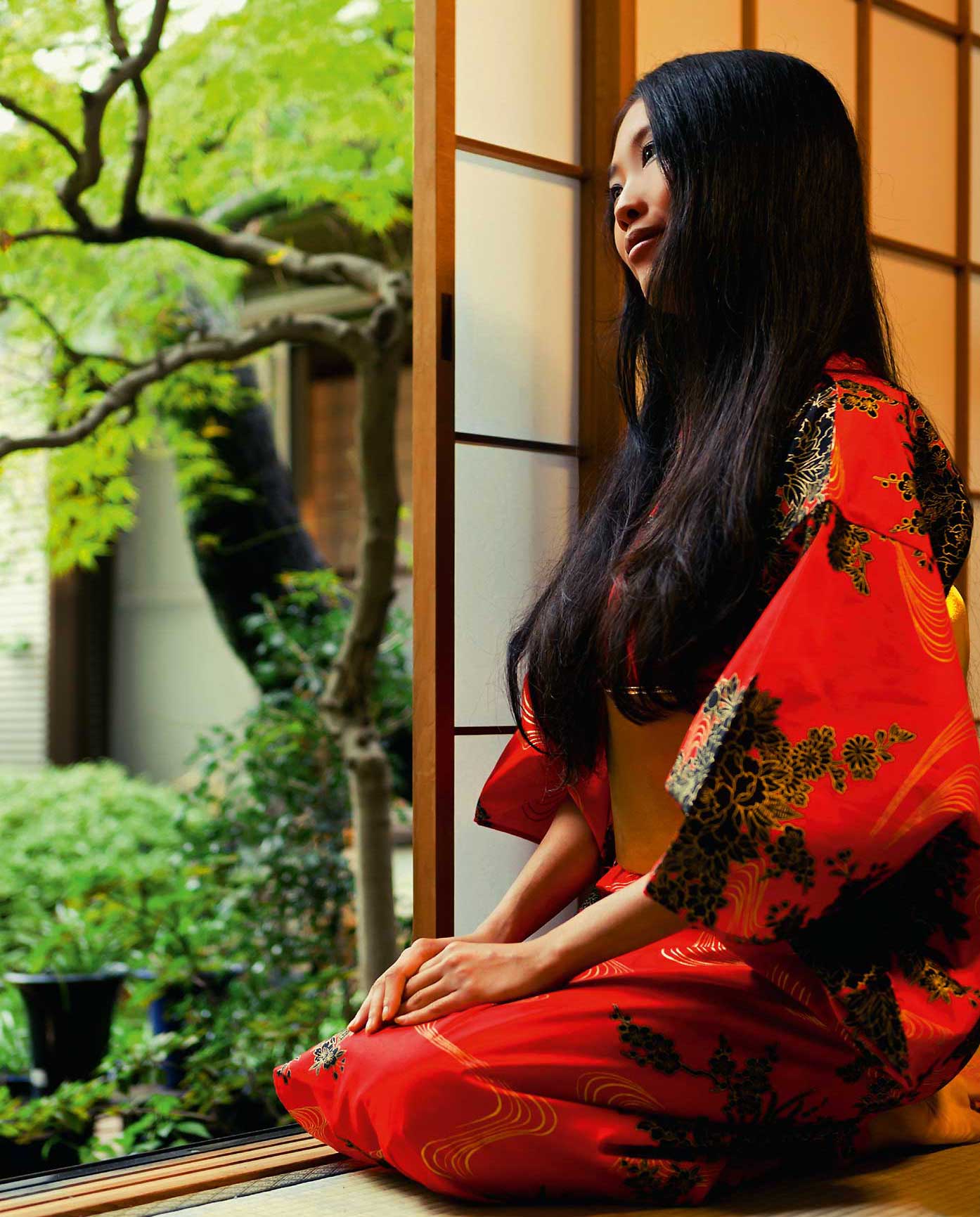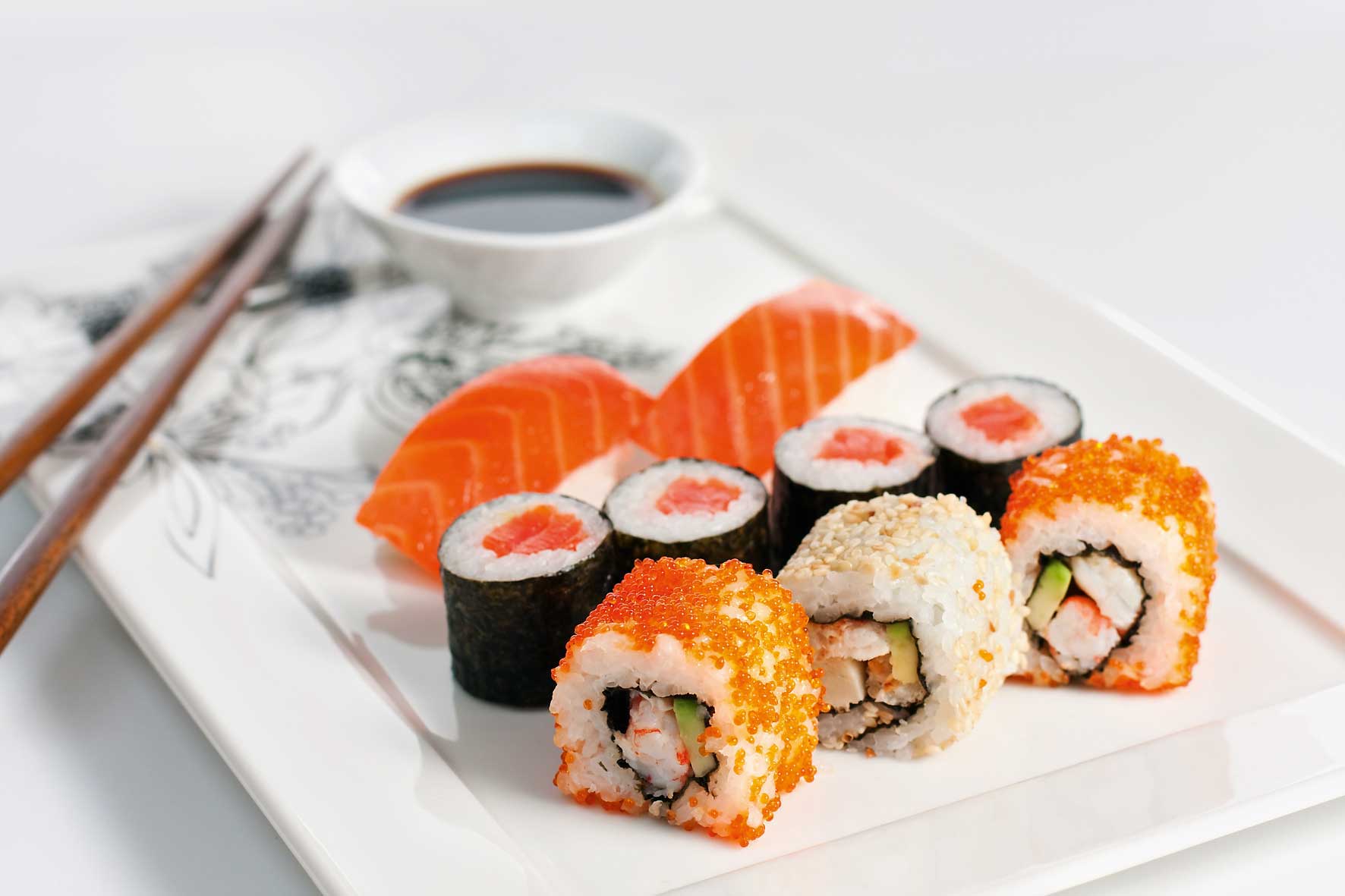
Japan – or “Nippon” as the Japanese themselves call it – this fascinating country in the extreme east of Asia is the fourth-largest island nation in the world, after Indonesia, Madagascar and Papua-New Guinea. In few other countries is the gulf between tradition and progress as huge as in this extremely proud nation. On the one hand, there are customs that have been retained over the centuries; and, on the other hand, Japan along with China is the country with the fastest growth rate in technology and research. At the same time, Japan is what almost everyone associates with the term “exotic”. With over 120 million inhabitants, Japan is one of the world’s ten most populous countries. The population is mainly spread among the four main islands of Hokkaidō, Honshū, Shikoku and Kyūshū. In fact, however, the Japanese Empire comprises over 6,800 islands.

6,852 islands – the fascination of Japan
This is how long ago the islands were probably first settled. Culture in Japan is strongly influenced by the Tenno, the Japanese emperor – literally the “ruler (sent) from heaven”. The 125th Tenno, Akihito – a symbol of the state and the unity of the Japanese people – now only has ceremonial duties to perform. On Japan’s capitulation in 1945, his father Hirohito denied the divinity – Arahitogami – of Japanese emperors. The Japanese constitution stripped the emperor of his decision-making powers in 1946, and Japan has been a constitutional monarchy since 1947. Nevertheless, the reverence of the Japanese for their Tenno is second to none. The imperial seal shows stylized chrysanthemums with 16 petals, a plant that has also lent its name to the imperial throne.

Six climate zones, and the red pine feels at home in many
Japan’s complex history is recorded in 14 epochs or periods. The current one has been called the Heisei period since Akihito was crowned in 1989. It is marked by an economic crisis in the aftermath the collapse of the Bubble Economy. Japan developed for many years separately from the rest of the world. Until the middle of the 19th century it was forbidden for foreigners and nationals to enter or leave the country. This isolation has also meant that strongly ritualized social traditions have evolved in Japan that have no comparison anywhere else in the world. Six climate zones, and the red pine feels at home in many The Japanese archipelago is situated at the juncture of four large tectonic plates which are constantly in motion. This is a region that is subject to perpetual change and experiences frequent earthquakes and volcanic eruptions. Japan extends from about 45° 33’ to 20° 25’ northern latitude. A mountainous country, its highest elevation, which is also one of its landmarks, is Mount Fuji on the main island of Honshu, 3,776 metres high and 100 kilometres from Tokyo. Because of its elongated, roughly north-south extension, the country is divided into six different climatic zones. These extend from Hokkaidô in the north, with its long cold winters and drifting shows, to the Nansei Islands in the south, with their subtropical climate. Life in Japan means constantly living with recurrent natural disasters. Along with the already mentioned earthquakes and volcanoes, there is also a risk of typhoons (in August and September) and tsunamis – Japan has the best early warning system that there is for these risks. Since over 80 per cent of Japan’s land surface is mountainous and there is a lack of extended plains, virtually all the large cities are dotted along the Japanese coast. To protect these cities from the dangers and elemental forces of the ocean, extremely solid dykes up to ten metres tall have been built. The biggest city is the capital Tokyo, formerly Edo, with over 8 million inhabitants. As it is adjoined by further heavily populated cities and the metropolitan area has almost 40 million inhabitants, this conurbation ranks among the world’s biggest metropolitan areas.
66 per cent of Japan is forested. The most widespread tree is the Japanese Red Pine that grows almost everywhere. Because of the lack of large plains, there are hardly any larger agricultural areas. Most agricultural produce is grown in terraced arable fields on mountain slopes. The most important food plants are rice and millet. Thanks to the damp climate, most of Japan enjoys lush vegetation. The high-altitude mountains, also known as the Japanese Alps, are virtually devoid of vegetation.
If you want to travel in Japan, you have a variety of options. One of the best-known means of transport is the Shinkansen, the Japanese high-speed train. It is considered the safest means of transport anywhere in the world. Since the opening of the first line back in 1964, there hasn’t been a single accident fatality. Even when a train derailed during an earthquake with the strength of 6.4 in 2004, no one was injured. The total length of the Shinkansen network now measures over 2,200 kilometres. Its punctuality is legendary. The total delay of all trains on a single day comes to a maximum of five minutes. If a Shinkansen is delayed by more than 15 seconds, the driver has to explain himself in writing. Anyone who wants to travel in Japan by car needs to bring a lot of time with him. The road signs are in Japanese and English. The roads are very narrow and there is very little truck traffic. It is worth noting that the petrol stations in Japan don’t accept any foreign credit cards. Driving into the centres of cities should be avoided. If you don’t think you’re up to driving by car, the buses are a good alternative. The overland lines are very spacious. Tickets can be purchased at the local travel agencies. In Japan, cars drive on the left and it is advisable to strictly observe the traffic code.
For those looking for a certain address, here’s some advice, because Japanese addresses are not so easy to find. Only the main roads in Japan’s cities are marked on the map of the town. First of all, you have to find the quarter. A number indicates a quadrant in the quarter. This is followed by a subquarter, at underground railway stations, for example – there you have to decipher a local sign with further information on the local streets. Don’t worry if the locals try to help you. Even Japanese unfamiliar with the locality can be found at these local signs, searching for addresses. It is advisable to obtain sufficient information in advance. Many restaurants, shops and hotels have a business card with a site plan on the reverse. If you want to buy a guide to architecture or art in order to find specific places, it is advisable to choose a book that, along with the addresses, gives instructions on how to get there as well.
1,600 temples and 400 shrines in Kyoto alone Shintō and Buddhism have always been the two biggest religious communities in Japan. While Shintoism has only ever existed in Japan, Buddhism reached the country in the fifth and sixth centuries. The buildings of Shintō are called shrines and the best-known is probably the Itsukushima shrine. Buddhism, on the other hand, is noted for its, in some cases, large temple complexes. Both religions are dear to the Japanese, and 80 per cent of them belong to one of the two main religions. Their interaction with the modern architecture of Japanese cities yields a unique contrast. In the former capital city Kyoto alone, with its 1.5 million population, there are 1,600 temples and 400 shrines. Here, as in other cities, these places of worship have been surrounded by modern glass and steel palaces. At first sight, these suggest manifestations of a heartless concrete jungle, although a second glance reveals the charm of Japanese cities.
When Europeans think of Japan, they automatically associate it with the concepts of the “geisha” and the “samurai”. Both have been distorted in Western minds and require a closer analysis. The geisha is a female Japanese entertainment artist. Even today, it is still a profession that requires a strict training. Girls start training as “maiko” (geisha apprentices) at the age of sixteen, and the apprenticeship takes five years. This is where they learn the principles of traditional Japanese arts and how to play several musical instruments. They must also be skilled at conversation and perfect singers, dancers and hostesses. They also have to master the tea ceremony customary in Japan. Many geishas practise their trade to an advanced age. To be successful, a geisha has to be graceful, charming, educated, witty and beautiful.

Greetings from the geisha and the samurai
No concept captures our notion of the Japanese man better than that of the “samurai”. These were originally ser-vants of their rulers. However, as a result of a code similar to the European code of chivalry, they developed into a caste in their own right that mainly served a lord but nevertheless had a huge influence on Japanese society. Unlike the geishas, the samurai were abolished by the ruling elite in the 19th century.
If you want to spend some time in Japan without raising eyebrows, you need to know a few rules of conduct and courtesy. Taking off your shoes when visiting is a must, and the host will supply you with slippers. Turning your back on the person accompanying you (not only during conversation) is considered extremely rude. Visitors should also know what certain numbers signify in Japan. The numbers 4 and 9 are considered unlucky in Japan. 4, pronounced “shi”, is a homophone for “death”; 9, when pronounced “ku”, is a homophone for “suffering”. The number 13, on the other hand, is also considered unlucky nowadays, even though it has been adopted from Western cultures.
The high life expectancy of the Japanese is legendary. One reason for this is said to be their staple food, rice. Although introduced originally from continental Asia, the short-grain variety has been grown in Japan for years and is today the only form of true rice recognized in Japan. It is interesting to note what has been served with it over the years. Up until the Edo period (middle of the 19th century) meat was in fact taboo. However, excavated bones testify that not all people inhabiting Japan have always observed this prohibition. An exception has been the eating of whale meat, because the whale was considered a fish for years and hence edible. The role of the whale as a supplier of protein undoubtedly contributed to its comestible status. Also familiar to many is the “bentō”, a meal of several items, served in a special small box. Certain customs have meanwhile made their way to Europe. These include sushi, eating with chopsticks, and sake, Japanese rice wine.

Taboo on meat until the 19th century
Japan abounds with curiosities and exotic customs. One of the most extreme is the Japanese national sport of sumo wrestling. The aim is to either barge the opponent out of the ring or to force him to touch the ground with any part of the body other than the soles of the feet. A match between the, in most cases, corpulent contestants – the average weight of a wrestler is 150 kilos – usually only takes a few seconds. This means that over a hundred matches often take place in a single day. There are proper sumo schools in Japan. Sumo in Japan is run professionally and very commercially, and the leading exponents of this sport are quite often veritable national heroes.
Anyone walking through the cities will often come across the unusual, e.g. vendding machines selling live insects or washing machines in the street, a lack of pavements and “sound princesses” on toilets. And on the subject of toilets, there are signs everywhere in toilets, explaining how to use them. But what if you’re caught short? No problem, because there are instant toilets, a kind of plastic bag with a small reservoir and little toilet disinfectant blocks. Although the Germans are generally considered fussy and disciplined, the Japanese beat them hands down. And they think of simply everything! If you don’t make it to your destination and can’t find any suitable accommodation, you don’t have to sleep on the streets. In some cities, at central locations (stations etc.), there are locker-type arrangements for sleeping. So-called “capsule hotels” have “rooms” measuring about 2 x 1 metres and equipped with a light and a television. You can hand in your belongings at reception. Having rested, you can resume your journey the next day.
Fields marked with a * are mandatory.
Mitsubishi Electric Europe B.V.
German Branch
Mitsubishi-Electric-Platz 1
D - 40882 Ratingen
Sales
Tel.: +49 (0)2102 / 486 - 6120
edm.sales@meg.mee.com
Service
Tel.: +49 (0)2102 / 486 - 7600
edm.hotline@meg.mee.com
Applications
Tel.: +49 (0)2102 / 486 - 7700
edm.applikation@meg.mee.com
Spareparts
Tel.: +49 (0)2102 / 486 - 7500
edm.parts@meg.mee.com